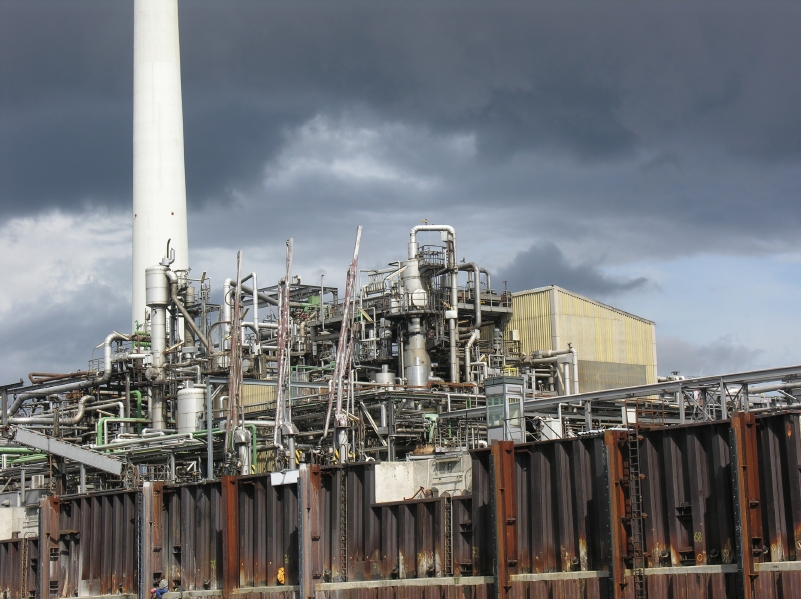
|
Major RMP Changes
In the RIA, the EPA explored low-, medium-, and high-cost alternatives for each of the major RMP changes. This article will state EPA’s projected cost for its proposed alternatives, which are averages for simple (i.e., smaller) and complex (i.e., larger) facilities.
Coordination activities. Under the proposed rule, all facilities with Program 2 or Program 3 processes would be required to coordinate with local response agencies annually to determine response needs and to ensure that response resources and capabilities are in place to respond to an accidental release of a regulated substance. The owner or operator would also be required to document coordination activities. The proposed rule includes a provision enabling the Local Emergency Planning Committee (LEPC) or local emergency response official to require the RMP facility owner or operator to develop an emergency response program that includes an emergency response plan, procedures for use, inspection and maintenance of response equipment, training for responding employees, and procedures to review and update the program. Some facilities that are currently designated as nonresponding facilities may become responding facilities (i.e., develop an emergency response program under 40 CFR 68.95). Alternatives to this provision are similar to the proposed requirements. One alternative would eliminate the option for local officials to require a facility owner or operator to comply with the emergency response requirements. This alternative, although the costs analyzed are the same as the proposed option, may result in lower actual costs as local officials’ ability to require compliance may increase the likelihood of current nonresponding facilities converting to responding facilities. A second alternative is a high-cost alternative and would require all facilities with Program 2 or Program 3 processes to comply with the 40 CFR 68.95 emergency response provisions, regardless of local response capability.
Ka-ching! $612 for simple facilities; $514 for complex facilities. Total cost for industry: $6.3 million. For new responders:
- Equipment costs: $58,925. Total cost for industry: initial—$351.1 million; maintenance—$35.1 million
- Emergency response plan development: $2,311 for simple facilities; $7,567 for complex facilities. Total cost for industry: initial—$17.9 million; maintenance—$1.8 million
- Training: $11,107 for simple facilities; $16, 241 for complex facilities with 99 or fewer employees, $64,964 for facilities with 100 or more employees. Total cost for industry: initial—$83.8 million; maintenance—$20 million
Exercises. This would be a new requirement under the RMP regulations. It includes Notification Exercises and Tabletop and Field Exercises.
- Notification exercises. All facilities with Program 2 or Program 3 processes would be required to conduct a notification exercise annually to ensure that the emergency contact list is complete, accurate, and up to date.
Ka-ching! $1.1 million for simple facilities; $237,021 for complex facilities. Total initial cost for industry: $1.4 million.
- Tabletop and field exercises. The proposed rule would require responding facilities to conduct annual exercises of their emergency response plans and invite local emergency response officials to participate. Under the low-cost alternative, facilities would conduct tabletop exercises annually. Under the proposed option, which is the medium-cost alternative, facilities would conduct a full field exercise at least once every 5 years and tabletop exercises annually in the interim years. Facilities with an RMP reportable accident would also have to conduct a full field exercise within 1 year of an RMP reportable accident, but this may not impose any additional burden under the medium-cost alternative, as it would count as the required field exercise for the next 5-year period. Under the high-cost alternative, facilities would conduct full field exercises annually.
Ka-ching! Simple facilities’ initial costs: Tabletop exercises—$4.6 million to $14.3 million depending on the size of the facility; Field exercises—$2.4 million to $6.8 million depending on the size of the facility. Complex facilities’ initial costs: Tabletop exercises—$770,300 to $10.1 million depending on the size of the facility; Field exercises—$283,322 to $7 million depending on the size of the facility. Total initial cost to industry: $100.1 million.
Information disclosure. The proposed rule would require that all facilities collect information related to RMP compliance and disclose it to the public and to local emergency response agencies. This includes those with Program 1 processes. However, facilities in Program 1 are not required to generate some information (e.g., they are not required to do compliance audits). The information would be updated annually. There are different cost estimates for public disclosure and LEPC disclosures.
Ka-ching!
- Public disclosure. Simple facilities’ initial costs: $2 million; complex facilities’ initial costs: $259,090 to $1.7 million depending on the size of the facility. Total cost for industry: $3.98 million.
- LEPC disclosure. Simple facilities’ initial costs: $6.2 million; complex facilities’ initial costs: $5.5 million. Total cost for industry: 11.7 million.
Public meetings. The proposed rule would require facilities to hold a public meeting for the local community within 30 days of an RMP reportable accident. The medium-cost alternative would require Program 2 and Program 3 facilities to hold a public meeting at least once every 5 years and within 30 days of an RMP reportable accident. The high-cost alternative would require all facilities (i.e., including Program 1 facilities) to hold a public meeting at least once every 5 years and within 30 days of an RMP reportable accident.
Ka-ching! $258,358 for simple facilities; $139,526 for complex facilities. Total initial cost to industry: $397,883.
Are you affected by the RMP amendments? Check out Enviro.BLR.com® for updates and all the information you will need for RMP compliance.
